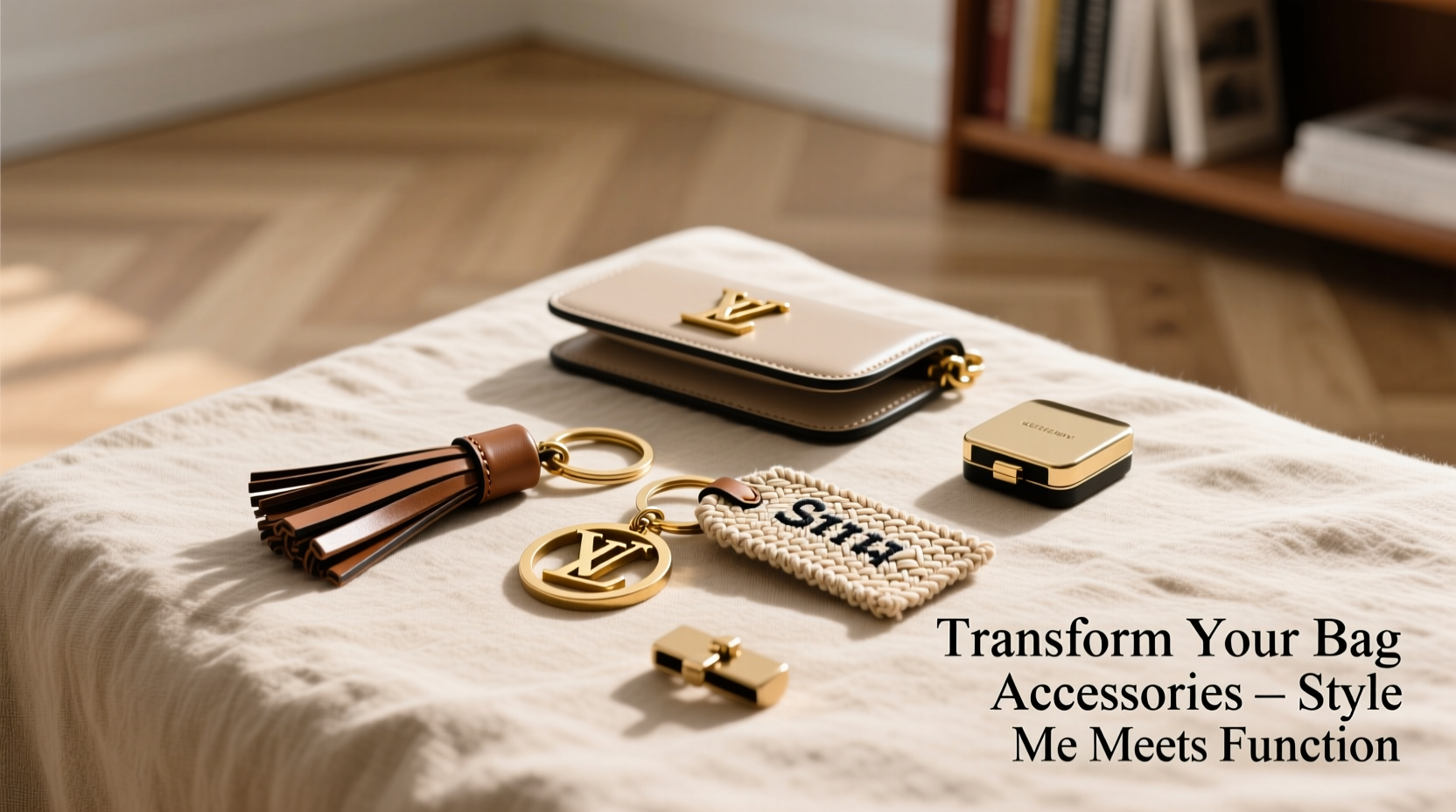Bag accessories often sit unused after a purse or backpack retires—whether it’s a decorative tassel, a vintage charm, or a high-quality metal clasp. Instead of discarding them, consider repurposing these elements into personalized, durable keychains. This transformation not only reduces waste but elevates everyday utility with a touch of individuality. By combining functionality with aesthetic appeal, you can create unique pieces that reflect your style while keeping essentials organized.
Why Repurpose Bag Accessories?

Designer bags and even well-made fashion accessories often feature hardware and embellishments crafted from premium materials—sterling silver, brass, enamel, or hand-stitched leather. These components retain value and durability long after the original bag has served its purpose. Rather than letting them gather dust, turning them into keychains gives them new life.
Repurposed keychains also make thoughtful handmade gifts. A friend might cherish a keyring made from a charm off their favorite childhood backpack or a sleek magnetic closure salvaged from a discontinued tote. The emotional resonance of reused accessories adds depth beyond mass-produced items.
“Design isn’t just about creating something new—it’s about reimagining what already exists.” — Lena Torres, Sustainable Fashion Designer
Step-by-Step Guide to Transforming Accessories into Keychains
Converting bag hardware into functional keychains requires minimal tools and basic craftsmanship. Follow this timeline to complete your project in under two hours.
- Inventory & Selection (15 minutes): Gather all usable bag accessories—zippers, D-rings, tassels, studs, or detachable pendants. Choose one focal piece per keychain.
- Clean & Prep (20 minutes): Use a soft cloth and mild soap solution to remove dirt. For metal parts, apply a polish suitable for the material (e.g., silver cleaner for tarnished charms).
- Dismantle Carefully (30 minutes): Use pliers or a small screwdriver to detach hardware without damaging it. Preserve connecting loops or jump rings if present.
- Attach Keyring (10 minutes): Slide a stainless steel split ring or lobster clasp onto the accessory’s loop. If no loop exists, use a jump ring to connect the piece securely.
- Enhance & Finish (15 minutes): Add complementary beads, leather tags, or engraved labels. Seal porous materials with a clear protective coating if needed.
Material Compatibility & Best Practices
Not all bag accessories are equally suited for conversion. Understanding material properties ensures longevity and usability. Below is a comparison of common bag components and their suitability as keychain bases.
| Accessory Type | Material | Suitable for Keychains? | Notes |
|---|---|---|---|
| Tassel | Silk/Cotton/Leather | Yes | Pair with metal cap; avoid excessive moisture exposure |
| Magnetic Clasp | Brass/Stainless Steel | Excellent | Inherently strong; ideal as main connector |
| Zipper Pull Tab | Plastic/Metal | Conditional | Metal tabs work well; plastic may crack under stress |
| D-Ring | Steel/Aluminum | Yes | Can serve as anchor point for multiple attachments |
| Stud or Rivet | Metal/Rubber Base | No | Lacks attachment mechanism; better for jewelry projects |
| Charm or Pendant | Sterling Silver/Gold-Plated | Excellent | Premium look; ensure secure bale or loop |
Checklist: Create Your First Upcycled Keychain
- ☑ Collect at least one sturdy bag accessory with an open loop or removable connector
- ☑ Clean thoroughly with appropriate solutions for the material type
- ☑ Use needle-nose pliers and wire cutters for precise handling
- ☑ Attach a rust-resistant keyring (preferably 25–30mm diameter)
- ☑ Reinforce weak joints with epoxy glue if necessary
- ☑ Test load capacity by adding keys and shaking gently
- ☑ Personalize with engraving, paint, or additional trinkets
Real Example: From Tote Strap End to Everyday Essential
Sophia, a graphic designer in Portland, had a beloved canvas tote with frayed edges she could no longer carry. However, the brass end caps on the shoulder straps remained pristine. She removed both using a utility knife and fine pliers, then sanded minor burrs. One cap was attached via a jump ring to a brushed nickel keyring. The second was paired with a mini leather tag stamped with her initials. Now, her keys jingle with a nostalgic echo of her favorite bag—and coworkers regularly ask where she bought such a distinctive keychain.
This kind of adaptive reuse blends memory, sustainability, and practical design. It proves that even modest components, when thoughtfully repurposed, become conversation starters.
Expert Tips for Longevity and Style
To ensure your transformed keychains remain both attractive and functional over time, follow these professional recommendations:
Consider layering multiple small accessories—like stacking a tiny mirror charm with a tassel—for a curated, maximalist effect. Alternatively, embrace minimalism with a single polished clasp on a sleek black cord. The balance between form and function defines success.
Frequently Asked Questions
Can I use glue instead of metal connectors?
Epoxy glue can supplement mechanical fasteners, especially for sealing loose threads or reinforcing fragile joints. However, never rely solely on adhesive for load-bearing connections. Metal rings and clasps provide essential structural integrity.
What if my accessory doesn’t have a loop?
You can add one. Drill a small hole carefully using a rotary tool (for metal or hard plastic), then insert a commercially available jump ring. For delicate fabrics or leather, sew a reinforced loop using waxed thread before attaching hardware.
Are there safety concerns with repurposed hardware?
Yes. Avoid sharp edges by filing them down. Ensure moving parts like zippers or clasps operate smoothly without pinching. Also, check for lead content in older metallic pieces—especially those manufactured before 2000—using a home test kit if uncertainty exists.
Final Thoughts: Turn Waste into Worth
Every bag tells a story, and its accessories don’t need to fade quietly into storage bins. By transforming them into stylish, functional keychains, you preserve memories while embracing sustainable creativity. Whether you're reviving a luxury brand accent or giving new purpose to a thrift-store find, the process empowers mindful consumption and personal expression.









 浙公网安备
33010002000092号
浙公网安备
33010002000092号 浙B2-20120091-4
浙B2-20120091-4
Comments
No comments yet. Why don't you start the discussion?